Reviews
La Dernière lettre
Frederick Wiseman
France / USA, 2002
Credits
Review by Adam Balz
Posted on 28 June 2008
Source Zipporah Films VHS
Categories Frederick Wiseman
Buried in the early pages of Vasili Grossman’s 880-page novel Life and Fate is a letter from a mother to her son. She has been forcibly removed from her home in Ukraine, she tells him, and now must live in a fenced-off ghetto for Jews; her fate is in the hands of the occupying Nazis, and locals have begun discussing the large trenches dug in the nearby forest, supposedly in search of potatoes. But she remains strong, using her experience as a doctor to nurture those around her, and in exchange she is given bread and soup—luxuries in a place where having anything more can get you killed. She lives with a family, though she says she wants to move, and she still sees non-Jewish friends by meeting them at the fence to exchange goods and news. This letter, which comprises an entire fourteen-page chapter in Grossman’s masterpiece, became the entire storyline of Frederick Wiseman’s second “fiction” film.
A revered documentarian for the last forty years, Frederick Wiseman’s original decision to step away from his nonfiction roots with 1980’s Seraphita’s Diary must have come as a surprise to those who venerate him. His legacy as a filmmaker had already been assured: Titicut Follies and High School are both considered landmarks in the genre, banned in one form or another since their release, while others like Primate and Juvenile Court continue to inspire debates in all fields of professional study. He is known not only for complete dedication to his subjects - canvassing locations, filming and editing himself for over a year - but also for his uncompromising love of seeing the story remain fully realized and uncut. Belfast, Maine famously runs more than four hours, while Near Death clocks in at almost six. The Last Letter, in comparison, runs sixty-one minutes—not even a full-length feature, by many standards. The trademark black-and-white cinematography is in full flourish, but there is little more. There are no sets, no props, no characters outside of the single old woman who has taken center-stage, dressed in nothing more than dark clothes bearing a yellow Star of David.
But, more importantly, there is no music. Wiseman has, throughout his entire career, worked without a soundtrack, and any music that happens to drift out from the screen is part of the story: The recurring shots of the makeshift cabaret at Bridgewater, the agenda-like use of Simon and Garfunkel by a teacher at Philadelphia’s Northeast High, the “hootenanny sequence” in Sinai Field Mission. Paired with questions of Wiseman’s purpose, it becomes increasingly clear that The Last Letter, while a work of both literary and cinematic fabrication, is presented as a documentary.
Yet unlike other nonfiction studies of the Holocaust, including The Sorrow and the Pity and Shoah - which run more than four hours and nine hours, respectively - Wiseman’s hour-long film reduces an endless supply of sources to one lone woman: Anna Semyonovna, whose long goodbye to her son is both uplifting and heartbreaking. But Anna is not alone. Throughout the recitation of her letter, her shadow dances against the walls behind her, mimicking her every movement - or, frequently, her tragic stillness - and, soon, one shadow has inexplicably become four, some more unmistakable than others, but otherwise moving without hesitation to follow her.
Assessing The Last Letter as anything other than a pseudo-documentary is difficult, especially when you consider Wiseman’s style. The long shots, black and white cinematography, and disuse of anything artificial have persisted for decades. So when actress Catherine Samie appears against a bare backdrop, drenched in little lighting and with no music to accompany her, it’s as though she’s walked into a Wiseman documentary stripped of any actuality. The location has been torn away, leaving a bare stage and set of glowing light-bulbs. The viewer knows what’s being seen is fictional - there were dress rehearsals and cuts and second attempts - but is caught in the same look and feel that has become Wiseman’s trademark.
It’s a constant, albeit endless debate: In the realm of observational documentaries, how much of what we see is the director’s own stylistic choice, and how much results from the spontaneity of the moment? On the surface, the scenes that have made Wiseman famous - the force-feeding in Titicut Follies, the closing scene in Domestic Violence, Mr. Hirsch’s rambling soliloquy at the end of Welfare - seem unplanned. Yet Wiseman’s films have always stressed the routine of our society, even if secondarily. There are force-feedings and instances of domestic violence and visits to the welfare office every day; what seems like spontaneous moments are, in fact, just bends in the circle of daily occurrences—the “vicious cycle,” as one woman in Welfare says, signified by the similarities seen between opening and closing shots in many of Wiseman’s other films.
Which is Wiseman’s point. He could easily have used the letter of any historical figure and made a much more personal look at the Holocaust; instead, by relying on the account of a fictional character, Wiseman is stressing the unending cyclicality of war and suffering. Because the emotions expressed in Anna’s letter are not bound to a real person, she acts as a figure whose words are applicable to almost all conflicts. There will always be racial and religious strife, Wiseman argues, just as there has always been; and just as the Anna of Grossman’s novel dies in Nazi hands, there is another Anna who died in enemy hands during World War One and again during Korea and again during Vietnam and, given enough time, in the wars of the future.
Life and Fate, confiscated by the KGB in 1959, was published sixteen years after Grossman’s death. And while The Last Letter, remaining virtually invisible alongside the other films in his diverse forty-year oeuvre, will never gain the status for Wiseman that Life and Fate did for Grossman, it is nonetheless a testament to the filmmaker’s astute powers of observation—a look at our world using the words of an old woman, a surrogate for so many others.
More Frederick Wiseman
-
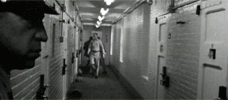
Titicut Follies
1967 -
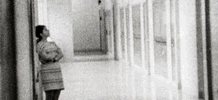
High School
1968 -

Law & Order
1969 -

Basic Training
1971 -

Juvenile Court
1972 -
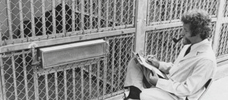
Primate
1974 -
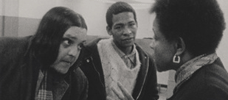
Welfare
1975 -
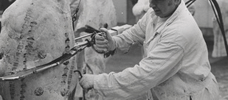
Meat
1976 -
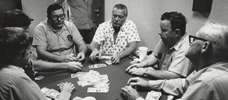
Sinai Field Mission
1978 -

Manoeuvre
1979 -

Model
1980 -

The Store
1983 -

Blind
USA -

Adjustment & Work
1986 -

Missile
1987 -

Central Park
1989 -

Near Death
1989 -

Aspen
1991 -

Zoo
1993 -

High School II
1994 -

Ballet
1995 -

La Comédie-Française
1996 -

Public Housing
1997 -

Belfast, Maine
1999 -

Domestic Violence / Domestic Violence 2
2001 / 2002 -
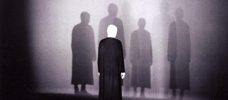
The Last Letter
2002 -

State Legislature
2006
We don’t do comments anymore, but you may contact us here or find us on Twitter or Facebook.



